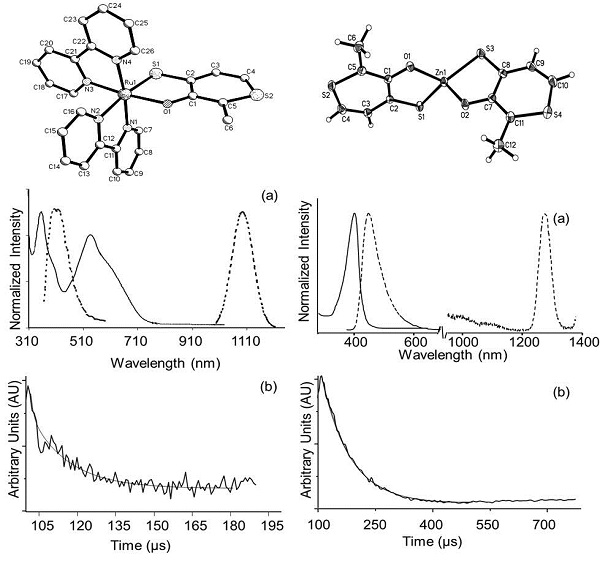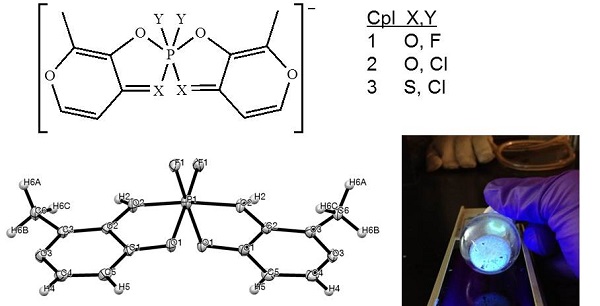Reports: ND351921-ND3: Photochemistry and Reactivity of Heterosubstituted Maltol Chelates
Patrick J. Farmer, Baylor University
Figure 1.
Ru and Zn complexes. In published work, we have shown that the bis-bipyridyl Ru(II) complex
of dithiomaltol, [Ru(bpy)2(ttma)][PF6], undergoes C-H
activation at a pendant alkyl position upon electrochemical or bulk oxidation,
yielding [Ru(bpy)2(ttma-alcohol)]+ and [Ru(bpy)2(ttma-aldehyde)]+
products. The photo-initiation of similar oxidative reactivity for compound
using flash quench methodology employing electron acceptors 1,1'-dimethyl-4,4'-bipyridinium,
pentamminechlorocobalt(III) chloride, hexaammineruthenium(III) chloride, and
2,3-dichloro-5,6-dicyano-1,4-benzoquinone. Investigation of the photoreactivity
identified fluorescence and phosphorecences that appeared ligand-based, Figure
2.
















